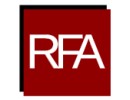Contact Seller
Radnorshire Fine Arts Ltd
Tel01597 272 439Please quote Antiques Atlas.


 St Ives Cornwall painting water colour
St Ives Cornwall painting water colour
 Vintage Maritime Painting, English
Vintage Maritime Painting, English
 Large Antique Portrait, English, Watercolour
Large Antique Portrait, English, Watercolour
 Sydney Maiden Watercolour of Hastings 1949 #1
Sydney Maiden Watercolour of Hastings 1949 #1
 1875 J Rogerson watercolour of horses
1875 J Rogerson watercolour of horses
 Sydney Maiden Watercolour of Pegwell Bay 1960
Sydney Maiden Watercolour of Pegwell Bay 1960
 Sydney Maiden Watercolour of Thorpneness Aldeburgh
Sydney Maiden Watercolour of Thorpneness Aldeburgh
 Chinese Watercolour Painting on Silk Phoenix
Chinese Watercolour Painting on Silk Phoenix
 Suffolk House, Penang, by James Wathen 1811
Suffolk House, Penang, by James Wathen 1811
 19th Century, Guia Fort, Macau, by James Wathen
19th Century, Guia Fort, Macau, by James Wathen
 Ranji or K.S.Ranjitsinhji, famous Indian Cricketer
Ranji or K.S.Ranjitsinhji, famous Indian Cricketer
 Victorian Harbour Scene Watercolour - Edward Brown
Victorian Harbour Scene Watercolour - Edward Brown
Non UK callers :
+44 1597 272 439
Sir David Wilkie, R.A. (1785-1841) attributed


The Angel Leaving the Family of Tobias, (after Rembrandt)
Inscribed in pencil on back of picture W1144, and repeated on old mount along with the name Pinkney, Sir David Wilkie, R.A. Tobias and the Angel, after Rembrandt
Pencil, ink and watercolour on paper
Mounted (not framed)
We are grateful to Hamish Miles for his help in cataloguing the picture
This spirited and masterful drawing has traditionally been ascribed to Sir D.Wilkie, R.A., after the Rembrandt of 1637 in the Louvre. Pinkney, the name written on the back of the original mount card may have been that of a former owner of the drawing.
A minister's son, David Wilkie studied painting in Edinburgh, despite his parents' misgivings about the occupation. His ambition led him to London, where he entered the Royal Academy schools. In 1806 he made his name with a modern genre painting, The Village Politicians, beginning a life of much-admired paintings of everyday scenes. In 1822, when exhibiting a wildly popular work, Chelsea Pensioners Reading the Gazette after the Battle of Waterloo, the Royal Academy took the unprecedented step of erecting barriers around it.
Wilkie's style evolved primarily due to study trips abroad. In 1814 and 1821 he visited Paris, Belgium, and The Netherlands, where he studied art by Rembrandt Harmensz. van Rijn, Titian, and Peter Paul Rubens. As a result, he expressed emotions more sharply, deepened his shadows, and made his colour stronger and his paint smoother. To recuperate from a nervous breakdown after overwork and the deaths of his mother and two brothers, Wilkie spent the mid-1820s in Italy, Austria, Germany and Spain, he was also in Paris again briefly, in 1828. He then adopted a broader style and began working on history paintings, diminishing his popularity among both public and critics. After visiting the Holy Land to research religious paintings, he died and was buried at sea.
SellerRadnorshire Fine Arts Ltd
View all stock from
Radnorshire Fine Arts Ltd

 Private dealer
Private dealer
By appointment only
Powys
Mid Wales
Tel : 01597 272 439
Non UK callers : +44 1597 272 439
Inscribed in pencil on back of picture W1144, and repeated on old mount along with the name Pinkney, Sir David Wilkie, R.A. Tobias and the Angel, after Rembrandt
Pencil, ink and watercolour on paper
Mounted (not framed)
We are grateful to Hamish Miles for his help in cataloguing the picture
This spirited and masterful drawing has traditionally been ascribed to Sir D.Wilkie, R.A., after the Rembrandt of 1637 in the Louvre. Pinkney, the name written on the back of the original mount card may have been that of a former owner of the drawing.
A minister's son, David Wilkie studied painting in Edinburgh, despite his parents' misgivings about the occupation. His ambition led him to London, where he entered the Royal Academy schools. In 1806 he made his name with a modern genre painting, The Village Politicians, beginning a life of much-admired paintings of everyday scenes. In 1822, when exhibiting a wildly popular work, Chelsea Pensioners Reading the Gazette after the Battle of Waterloo, the Royal Academy took the unprecedented step of erecting barriers around it.
Wilkie's style evolved primarily due to study trips abroad. In 1814 and 1821 he visited Paris, Belgium, and The Netherlands, where he studied art by Rembrandt Harmensz. van Rijn, Titian, and Peter Paul Rubens. As a result, he expressed emotions more sharply, deepened his shadows, and made his colour stronger and his paint smoother. To recuperate from a nervous breakdown after overwork and the deaths of his mother and two brothers, Wilkie spent the mid-1820s in Italy, Austria, Germany and Spain, he was also in Paris again briefly, in 1828. He then adopted a broader style and began working on history paintings, diminishing his popularity among both public and critics. After visiting the Holy Land to research religious paintings, he died and was buried at sea.
Price The price has been listed in British Pounds.
Conversion rates as of 26/JUN/2025. Euro & Dollar prices will vary and should only be used as a guide.
Always confirm final price with dealer. SOLD
DimensionsImage 12.3 x 10 cm
Mount 30.6 x 24 cm, sight 13.5 x 11 cm
Category Antique Pictures / Engravings / Art
> Antique Watercolours
Period Early 19th Century Antiques
Material Paper
Origin British
Condition Condition This watercolour has been lightly cleaned by an accredited conservator and mounted (floated) using acid free conservation board.
Item code as176a207
Status Sold
£0 
$0.00 
€0.00 

$

€

Conversion rates as of 26/JUN/2025. Euro & Dollar prices will vary and should only be used as a guide.
Always confirm final price with dealer. SOLD
Shipping information
All our prices include FREE packing and delivery within the UK.
If you live outside the UK and you wish to purchase a painting, please contact us by phone or e-mail for further details concerning shipping costs.
If you live outside the UK and you wish to purchase a painting, please contact us by phone or e-mail for further details concerning shipping costs.
Terms and conditions
Returns and Complaints
Great care and trouble has been taken to ensure that all details written for every picture are correct and the photos are of sufficient quality so that each item can be viewed in detail. If the purchaser can find a fault (by way of a photograph) as proof of damage in transit that is not present in our promotional photo i.e. a tear in the canvas, broken glass, broken frame, damage to surface of picture, then a full or part refund will be offered back to the purchaser depending on the extent of the damage. This will only apply within 24 hours of signing for the parcel.
If the parcel has arrived and appears to be damaged in some way please return the parcel to us (unopened) and we will refund the purchase price on receipt of the picture.
If the purchaser can prove with written evidence from three independent experts that our description was false or misleading in any way then a full refund will be offered back to the purchaser.
Every effort has been made to give our clients complete confidence and satisfaction when buying from our company.
Great care and trouble has been taken to ensure that all details written for every picture are correct and the photos are of sufficient quality so that each item can be viewed in detail. If the purchaser can find a fault (by way of a photograph) as proof of damage in transit that is not present in our promotional photo i.e. a tear in the canvas, broken glass, broken frame, damage to surface of picture, then a full or part refund will be offered back to the purchaser depending on the extent of the damage. This will only apply within 24 hours of signing for the parcel.
If the parcel has arrived and appears to be damaged in some way please return the parcel to us (unopened) and we will refund the purchase price on receipt of the picture.
If the purchaser can prove with written evidence from three independent experts that our description was false or misleading in any way then a full refund will be offered back to the purchaser.
Every effort has been made to give our clients complete confidence and satisfaction when buying from our company.
View all stock from
Radnorshire Fine Arts Ltd

 Private dealer
Private dealerBy appointment only
Powys
Mid Wales
Tel : 01597 272 439
Non UK callers : +44 1597 272 439
You may also be interested in
 St Ives Cornwall painting water colour
St Ives Cornwall painting water colour
 Vintage Maritime Painting, English
Vintage Maritime Painting, English
 Large Antique Portrait, English, Watercolour
Large Antique Portrait, English, Watercolour
 Sydney Maiden Watercolour of Hastings 1949 #1
Sydney Maiden Watercolour of Hastings 1949 #1
 1875 J Rogerson watercolour of horses
1875 J Rogerson watercolour of horses
 Sydney Maiden Watercolour of Pegwell Bay 1960
Sydney Maiden Watercolour of Pegwell Bay 1960
 Sydney Maiden Watercolour of Thorpneness Aldeburgh
Sydney Maiden Watercolour of Thorpneness Aldeburgh
 Chinese Watercolour Painting on Silk Phoenix
Chinese Watercolour Painting on Silk Phoenix
 Suffolk House, Penang, by James Wathen 1811
Suffolk House, Penang, by James Wathen 1811
 19th Century, Guia Fort, Macau, by James Wathen
19th Century, Guia Fort, Macau, by James Wathen
 Ranji or K.S.Ranjitsinhji, famous Indian Cricketer
Ranji or K.S.Ranjitsinhji, famous Indian Cricketer
 Victorian Harbour Scene Watercolour - Edward Brown
Victorian Harbour Scene Watercolour - Edward Brown



